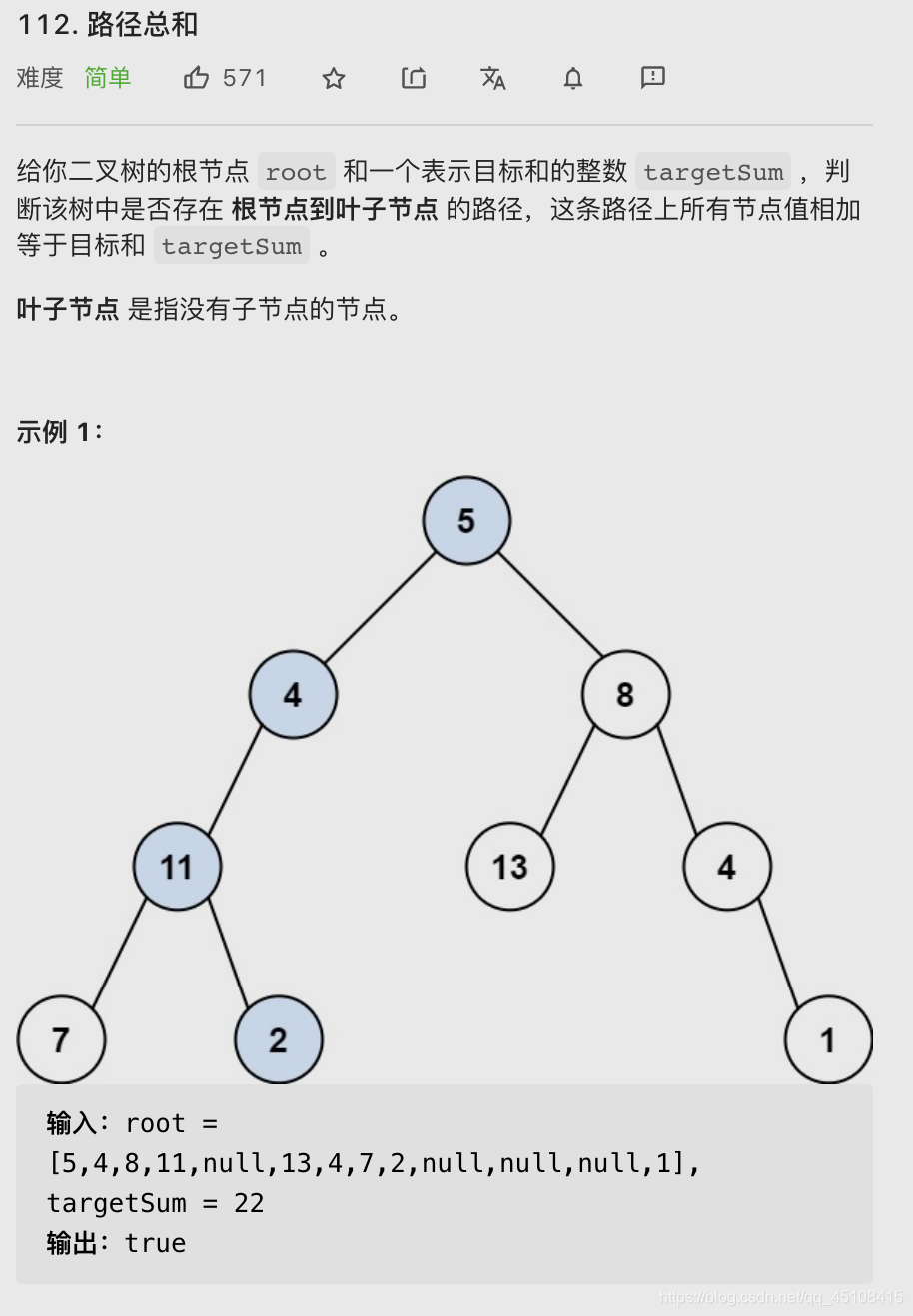文章目录
- 路径总和 I
- 路径总和 II
比较简单,就连着一起写了
路径总和 I
- 注意:一定得走到叶子才算

- 直接看代码吧,注释也就几行。
/*** Definition for a binary tree node.* public class TreeNode {* int val;* TreeNode left;* TreeNode right;* TreeNode() {}* TreeNode(int val) { this.val = val; }* TreeNode(int val, TreeNode left, TreeNode right) {* this.val = val;* this.left = left;* this.right = right;* }* }*/
class Solution {// 递归解决战斗public boolean hasPathSum(TreeNode root, int targetSum) {// 递归结束条件if(root == null){return false;}// 找到结果条件if(targetSum == root.val && root.left == null && root.right == null){return true;}// 往左右继续递归return hasPathSum(root.left, targetSum - root.val) || hasPathSum(root.right, targetSum - root.val);}
}
路径总和 II
- 相当于在 I 的基础上,加入了一个路径的存储、修改

- 注意。。存储的路径要 new 出来再存入
class Solution {List<List<Integer>> ans = new ArrayList<List<Integer>>();LinkedList<Integer> path = new LinkedList<>();public List<List<Integer>> pathSum(TreeNode root, int targetSum) {find(root, targetSum);return ans;}void find(TreeNode root, int targetSum){// 递归结束条件if(root == null){return;}// 路径在递归前后进行增减path.add(root.val);// 找到答案的情况if(targetSum == root.val && root.left == null && root.right == null){ans.add(new LinkedList<>(path));}find(root.left, targetSum - root.val);find(root.right, targetSum - root.val);path.removeLast();}
}

)

)
)
)

)
...)
)
实例)
)

)
)

)
)
)
